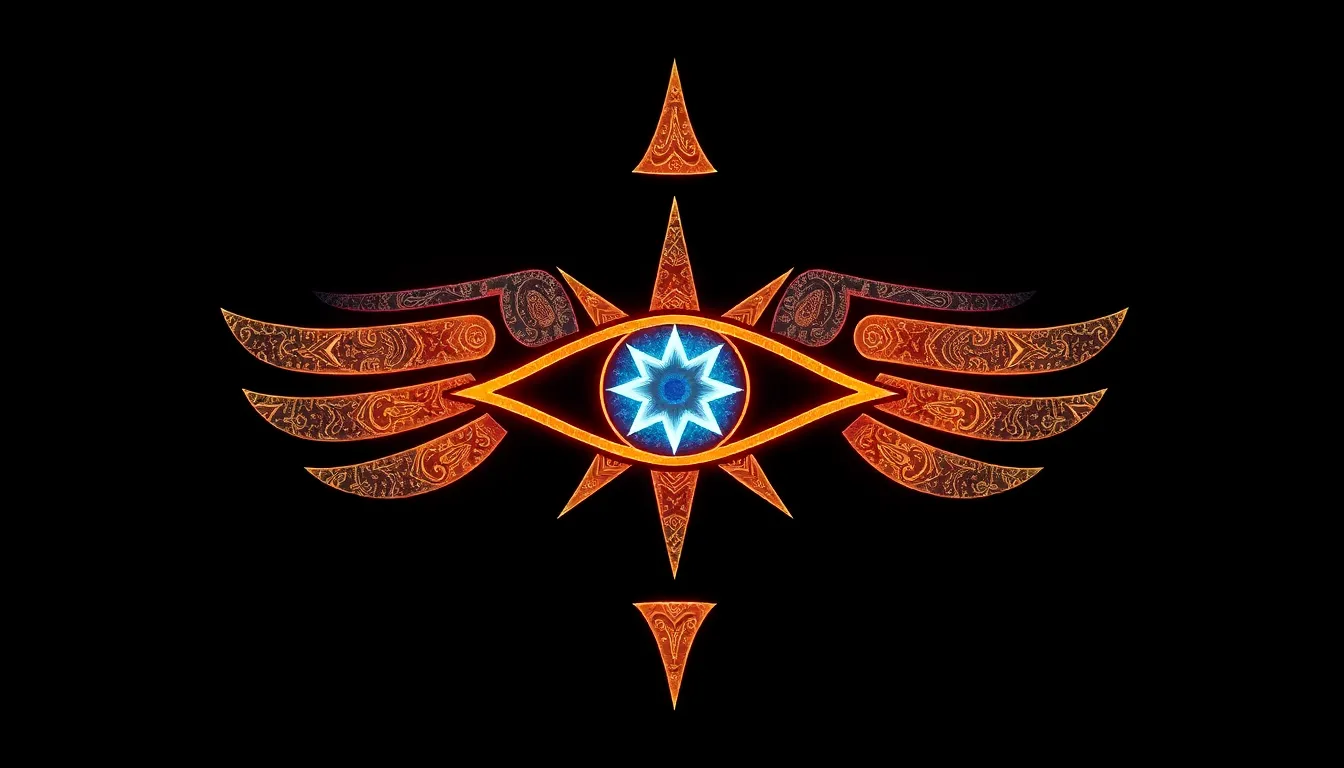The Eye of Horus: A Star Symbol of Protection and Power
I. Introduction
The Eye of Horus, also known as the Wedjat, is one of the most recognized symbols from ancient Egyptian mythology. This ancient emblem embodies a rich tapestry of meaning and significance, representing various aspects of life, death, and the divine. The Eye of Horus was not merely a decorative motif; it held profound importance in ancient Egyptian culture, symbolizing protection, healing, and royal authority.
This article aims to explore the historical origins, symbolism, artistic representations, and modern relevance of the Eye of Horus, shedding light on its enduring legacy in contemporary society.
II. Historical Origins of the Eye of Horus
The Eye of Horus has deep mythological roots in ancient Egyptian tradition. It is primarily associated with the god Horus, the falcon-headed deity who represented the sky and kingship. According to myth, Horus was embroiled in a fierce battle with his uncle Seth, who had murdered his father, Osiris. In the struggle for power, Horus lost his left eye, which was subsequently restored by the god Thoth, symbolizing healing and renewal.
This mythological narrative illustrates the significance of the Eye of Horus as a symbol of protection, healing, and the eternal struggle between good and evil. Over the centuries, the symbol evolved, appearing in various contexts, from royal insignias to funerary artifacts, reflecting the changing dynamics of ancient Egyptian society.
III. Symbolism and Meaning
The Eye of Horus carries multiple layers of meaning, deeply embedded in the fabric of ancient Egyptian belief systems. Here are some key aspects of its symbolism:
- Protection and Healing: The Eye was often used as a protective amulet, believed to ward off evil and ensure the well-being of the wearer.
- Power and Royal Authority: It symbolized the divine right of pharaohs to rule, reinforcing their connection to the gods.
- Unity and Wholeness: The Eye of Horus represents completeness, as its restoration signifies the triumph over adversity and the reunification of the fragmented aspects of life.
IV. The Eye of Horus in Ancient Egyptian Art and Artifacts
The Eye of Horus was a prevalent motif in ancient Egyptian art, appearing in various forms and media:
- Common Depictions: It was often depicted in tombs, temples, and monuments, serving both decorative and spiritual purposes.
- Amulets and Jewelry: The symbol was crafted into amulets and jewelry, worn by individuals to ensure protection during their lives and in the afterlife.
- Architectural Influence: The Eye of Horus influenced Egyptian architecture and iconography, with its representation seen in various structures dedicated to the gods.
V. The Eye of Horus in Modern Culture
In recent years, there has been a resurgence of interest in ancient Egyptian symbols, with the Eye of Horus gaining popularity in contemporary culture:
- Contemporary Art: Artists often incorporate the Eye of Horus in their works to convey themes of protection and wisdom.
- Fashion and Tattoos: The symbol has become a popular choice for tattoos and fashion accessories, symbolizing strength and spiritual insight.
- Popular Media: The Eye of Horus appears in various forms of media, from literature to films, often representing a connection to ancient wisdom.
VI. The Eye of Horus and Other Cultural Symbols
The Eye of Horus is not an isolated symbol; it shares similarities with other cultural emblems:
- Comparison with Similar Symbols: Many cultures have their own versions of protective eyes, such as the Nazar in Turkish culture or the Greek evil eye.
- The Eye of Providence: This symbol, often associated with Freemasonry and the idea of divine guidance, shares thematic parallels with the Eye of Horus.
- Cross-Cultural Interpretations: Throughout history, societies have employed symbols of protection and power, illustrating the universal human desire for safety and authority.
VII. The Eye of Horus in Spiritual and Esoteric Practices
In recent years, the Eye of Horus has found its way into spiritual and esoteric practices:
- Modern Spiritual Practices: Many new age practitioners use the symbol as a focus for meditation and healing rituals.
- Symbolism in Meditation: The Eye represents inner vision and insight, promoting clarity and spiritual awakening.
- New Age Beliefs: The Eye of Horus is often associated with intuition and psychic abilities, appealing to those seeking deeper spiritual understanding.
VIII. Conclusion
The Eye of Horus is a powerful symbol of protection, healing, and authority that has transcended time and culture. Its significance in ancient Egyptian society reflects the complexities of their belief systems and the human experience. Today, the Eye of Horus continues to resonate, finding relevance in various aspects of modern life, from art to spirituality.
As we reflect on the lasting legacy of the Eye of Horus, it becomes clear that its enduring power and symbolism serve as a reminder of the universal quest for protection, understanding, and connection to the divine.




